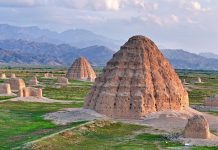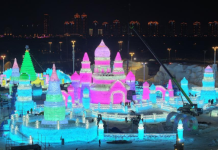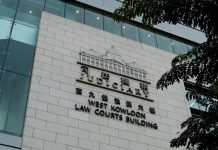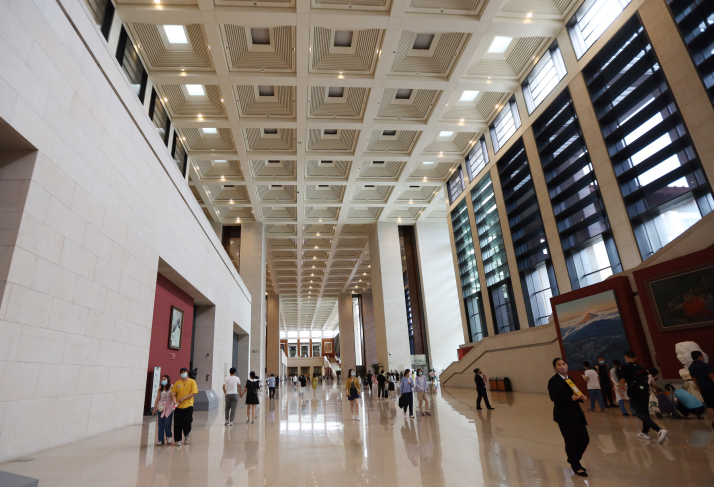
Some 503 artifacts traveled from Italy to China and were presented to the public on July 10, as the first international exhibition hosted by the National Museum of China (NMC) against the backdrop of the COVID-19 pandemic opened that day.
The items, including bronzewares, sculptures, pottery and ancient coins, have been collected from 26 national-level museums across Italy. Some objects had never left Italy; some had never even left their museums. Collectively, they tell a story of the ancient Roman civilization from the fourth century B.C. to the first century A.D. through an exhibition titled Tota Italia: Origins of a Nation.
The trip wasn’t all smooth sailing. Transportation restrictions meant the Italian team was unable to accompany the treasured artifacts on their journey to Beijing.
After the items had arrived at the NMC, teams from both Italy and the NMC spent long video calls examining the condition of each item and settling all safely in the museum’s public galleries.
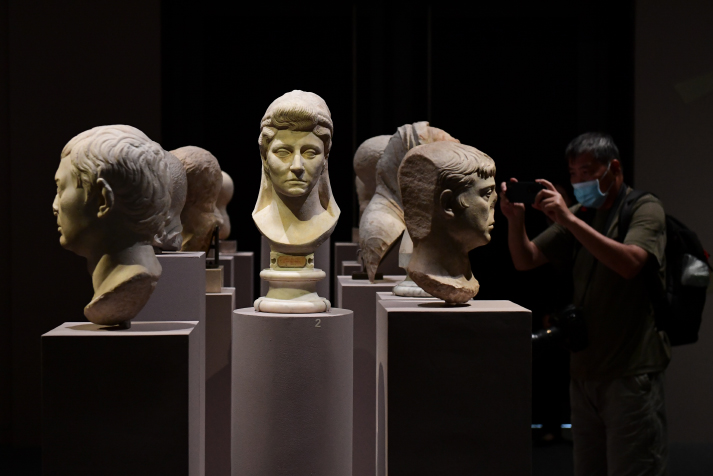
Going the distance
China and Italy have enjoyed a long history of friendship. The first group of people claiming to be an ambassadorial mission of Romans to China was recorded by the Book of the Later Han, an account of a period about 2,000 to 1,800 years from today in Chinese history.
The exhibition on the ancient Roman civilization, a flagship event in celebration of the 2022 China-Italy Year of Culture and Tourism, has received much attention from both the public and the leaders of the two countries.
Chinese President Xi Jinping and Italian President Sergio Mattarella sent congratulatory letters to the opening ceremony of the exhibition.
Xi said in his letter that “China and Italy are outstanding representatives of Eastern and Western civilizations.” He further hoped this exhibition could become an opportunity to promote exchanges and mutual learning between both civilizations, strengthen the bond between people from the two countries, and inject new vitality into bilateral ties.
Mattarella wrote in his congratulatory letter that cultural cooperation is an important part of the Italy-China friendship. The exhibition and a series of China-Italy Year of Culture and Tourism activities demonstrate the depth of the bilateral relationship.
A visitor to the exhibition surnamed Yang arrived at the NMC specifically for the display on July 10. She’d learned about the exhibition online and immediately got her tickets for the opening day.
Born in Xi’an, Shaanxi Province, the ancient capital of several Chinese dynasties, Yang is an avid museum goer. “Over 2,000 years ago, Xi’an was the capital of China and Rome was the capital of the Roman Empire,” Yang said to Beijing Review. “Xi’an and Rome are also the starting and ending places of the ancient Silk Road.”
She commented that the items on display at this exhibition are an accurate representation of ancient Roman civilization and cover a large timespan. “It has offered a vivid picture of what Rome was like during China’s Han Dynasty (202 B.C.-A.D. 220); it helped me form a more complete picture of the Roman Empire,” she said.
As the exhibition will run for three months up to October 9, many more history buffs are expected to come get an up-close and panoramic view of Italian history.
This is the third major China-Italy joint exhibition. In 2018, the NMC teamed up with 21 Italian museums and 17 Chinese museums to host the exhibition Embracing the Orient and the Occident: When the Silk Road Meets the Renaissance, showcasing cultural and artistic exchanges between the two countries from the 13th to the 16th century.
In 2019, another show titled The Journey Back Home: An Exhibition of Chinese Artifacts Repatriated From Italy demonstrated the determination of the Chinese and Italian governments to jointly protect cultural heritage and open up the possibility of returning lost cultural relics to their motherland through judicial and diplomatic channels.
“Italy is just one of the countries we have cooperated with over recent years, both in cultural exchanges and hosting joint exhibitions,” Wang Chunfa, Director of the NMC, told China News Service. “We have also been hosting more exhibitions abroad over the past decade. The proportion of such exhibitions promoting cultural exchange increased from 12.5 percent in 2016 to 37.5 percent in 2019.”
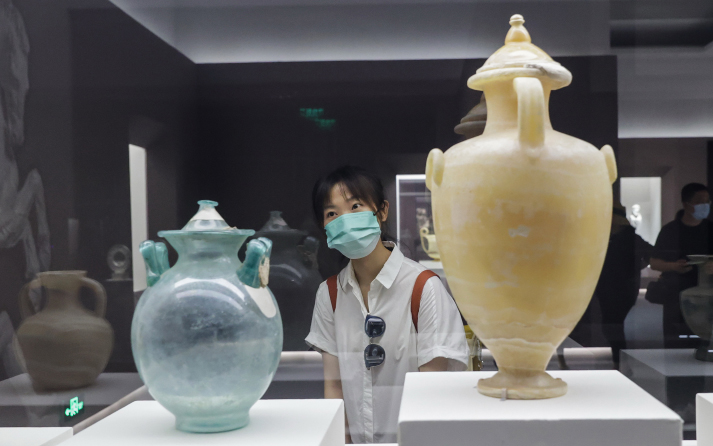
Crowning glory
Flanking Tiananmen Square on its east, the NMC lies at the very center of Beijing, facing the Forbidden City across Chang’an Avenue. The main building, covering about 200,000 square meters, makes it the world’s largest single-building museum.
Its precursor, the Preparatory Office of the National Museum of History, was established in July 1912. The National Museum of History was officially established in November 1920, and it was renamed the Beijing Museum of History in October 1949 after the People’s Republic of China was founded.
In 2003, the NMC was formed after merging the National Museum of Chinese History and the National Museum of Chinese Revolution. Following extensive remodeling, the NMC formally opened to the public in 2012.
Since June 29, the museum has launched a series of exhibitions, presenting the process of antiques collection, and relics excavation and protection, to mark the 110th anniversary of the museum’s inception.
The NMC’s archaeological exploration got underway in 1921 and has maintained a leading position in terms of remote sensing in underwater archaeology. Remote sensing has been used for archaeological research in several ways in the past, including detection of subsurface remains, monitoring archaeological sites and monuments, and conducting archaeolandscape studies.
In 1987, at the initiation of Yu Weichao, then curator of the National Museum of History, China set up its first underwater archaeology research office.
The first generation of Chinese underwater archaeologists carried out archaeological excavations from 1992 to 1995 on a shipwreck in northeast China’s Liaoning Province. The following 30 years saw extensive underwater archaeological exploration and research in many waters across China.
Today, the NMC has set up institutes on research, conservation, archaeology, calligraphy and Chinese painting, and has a team of professionals working on artifact restoration.
Since 2018, the NMC has been developing a smart museum with the use of new technologies. Enhanced with 3D technology, a data platform displays the artifacts’ every detail; the museum has further adopted augmented, virtual and mixed reality technologies to create immersive visuals that lift overall visitor experience.
The NMC, like many of its peers, has had to close its doors several times in the past two years due to pandemic control measures. Now, the museum has capped its daily visitor number at 12,000. People need to get their tickets at least two days in advance to ensure entry on a specific day.
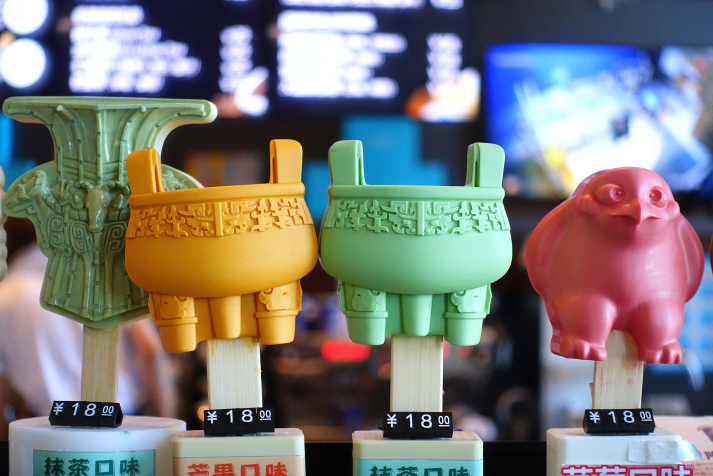
A storyteller
“The NMC serves as a window into Chinese culture,” Wang said. “Each artifact tells its own wonderful story and we are here to deliver those stories to more people around the world.”
Due to pandemic restrictions, online platforms have played a major role in international communication over the past few years. From July 6 to 11, the NMC, joined by 33 leading museums both from China and abroad, gathered online for the Treasure Hunt Relay: Global Museum Director’s Choice project. During an event themed Hand in Hand: Share the Splendor of World Civilizations, each museum shared its story and presented its most prized artifacts via live broadcast, allowing audiences worldwide to experience the power of culture in their homes.
To elevate the visitor experience, museums take into account both the digital and the physical aspects of their exhibitions. “Many visitors still rely on tour guides to learn more about the artifacts,” said Gong Liang, former Director of Nanjing Museum. “We need to explore more innovative ways to make the artifacts speak for themselves.”
In a bid to attract more young visitors, many museums in China have been launching their own assortment of creative products in recent years. The NMC has designed jewelry and accessories based on its artifacts on display. But its ice creams shaped like cultural relics proved most popular.
To paint a more comprehensive picture of China, the NMC created the permanent exhibition Road to Rejuvenation in November 2012, presenting the endeavors of Chinese people to rejuvenate their country from the period when China was reduced to a semi-colonial and semi-feudal society to the contemporary period characterized by reform and opening up. On November 29, 2012, then Vice President Xi visited the exhibition, where he called on the nation to pursue the Chinese dream of national rejuvenation. In November 2018, another exhibition, Great Changes: A Major Exhibition Commemorating the 40th Anniversary of China’s Reform and Opening Up, was launched, receiving over 4.23 million visitors to date.
In July 2019, The Road to Modernization—70 Years of the People’s Republic of China, jointly hosted by the NMC and the government of Hong Kong Special Administrative Region, launched in Hong Kong and attracted an average 1,000 visitors per day.
“Telling the story of China and its history and development should be an ever-evolving process rather than one standing still in time,” Wang said.
-The Daily Mail-Beijing review news exchange item



